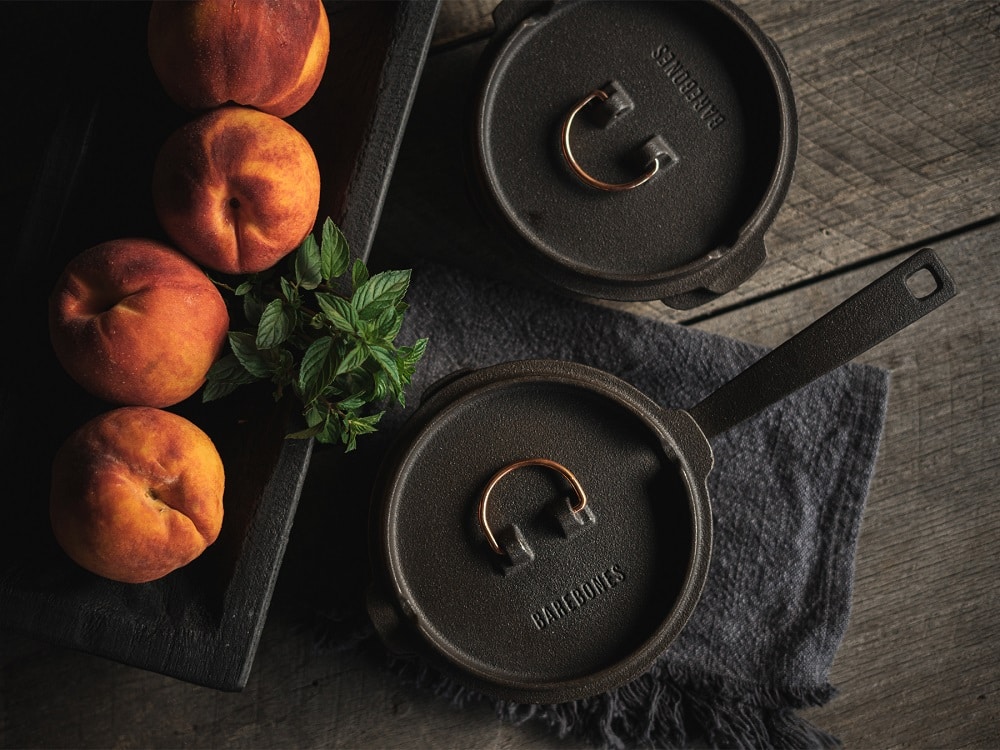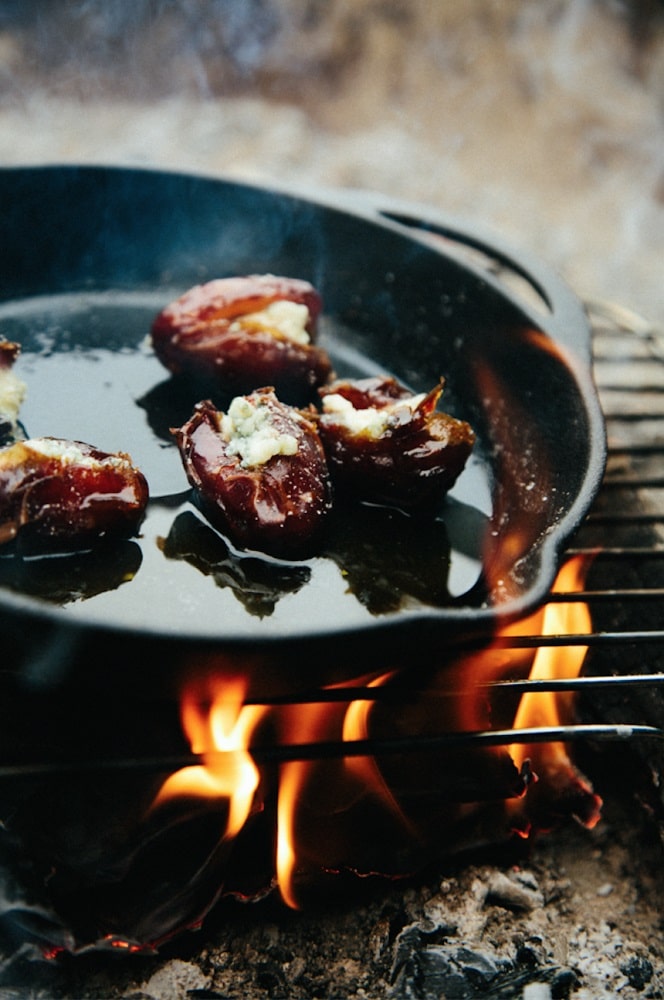
What do the All-in-one cast iron skillet, Dutch Oven or Flat pan have in common? They are all made of sturdy cast iron! This powerful material is not only perfect for cooking on an open fire, but also offers numerous other possibilities. And if you take good care of your pan, it is almost indestructible. While a cast iron pan may not be the cheapest option, it is definitely an investment worth making! With pans from Barebones, you can be sure that you will be able to prepare delicious recipes in the near future. Well, of course, whether the dishes turn out delicious does not only depend on the pan.
Let’s look at the amazing benefits of a cast iron pan:
Congratulations on your brand new Barebones pan! Now that you have this amazing pan in your hands, it’s time to start cooking. The great thing is that all Barebones pans are already seasoned, meaning the non-stick coating is already applied. So you can start preparing the most delicious recipes right away!

Daily maintenance
After cooking a delicious dish, it is most convenient to clean the pan while it is still hot, but not too hot of course, otherwise you risk burning your fingers. Rinse the pan with warm water, but do not use soap. Soap damages the non-stick coating. If necessary, gently use a dishwashing brush, Chain Mail Cleaner or the Iron Cast Scraper if some food residue did remain.


Should there be stubborn spots, gently rub some salt and oil on the spot and rinse again with water. If this doesn’t work right away, repeat the process a few times. This may also be a sign that it is time to renew the non-stick coating.
After cleaning, dry the pan and put it briefly on low heat to ensure that all the remaining moisture evaporates. Then spread a thin layer of oil over the pan, usually a teaspoon is enough. Make sure the oil is evenly distributed and there are no accumulations. Let the pan cool completely and voila, your pan is ready to put in the cupboard!
Renewing non-stick coating
Over time, the non-stick coating becomes worn, but fortunately, it is super easy to revive it. Before renewing the coating, give the pan a good cleaning. Start by washing the pan thoroughly with warm water and soap. This time you do use soap to make sure that all residual dirt disappears, including any rust spots.
Next, grease the pan with oil. Be sure to include the inside, outside and handle all the way. All sides of the pan should be covered with a thin layer of oil. Although Barebones cast iron pans are seasoned with sunflower oil, you can also use other types, including vegetable oils such as corn oil or canola oil. After you grease the pan, rub it well until it no longer looks greasy.
Now it is time to heat the pan. Place the pan in a preheated oven at 230 degrees and set a timer for 30 minutes. Some smoke may be generated during heating, which is normal. Make sure the kitchen is well ventilated. The liquid oil will transform into a new non-stick coating during the process. Always use an oven for this process, not the stove, so that the heat is evenly distributed.
After 30 minutes, remove the hot pan from the oven. Now apply another layer of oil and put the pan in the oven again for 30 minutes. Repeat this process until you have applied three or four coats of oil. Then let the pan cool, and you’re all set to cook all kinds of delicious recipes!

Saving your pan
How you store the pan is actually more important than where you store it. Always make sure your pan is completely dry. Even a small drop of moisture can cause rust, and rust detracts from that beautiful non-stick coating you just applied. We want to avoid that, of course. If your pan is part of a stack of pans, place a sheet of kitchen paper, a dry dish towel or something else between the pans to protect the surfaces.
Cooking with cast iron pans is already a breeze, and we have some additional handy tips for you!